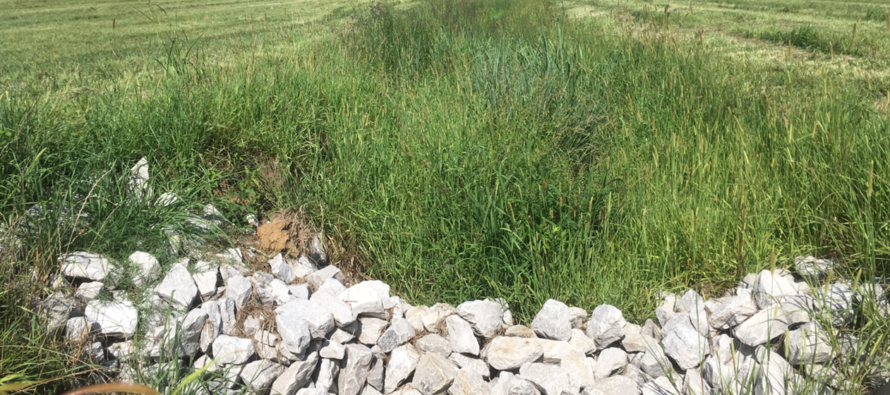Controlling Nutrient Movement in Landscapes

Related Articles
- Fertilizing Cotton with Poultry Litter 5
- Spring Nitrogen Fertility Suggestions for Wheat 0
- Micronutrients for Mississippi Crop Production 4
Latest Tweets
The greatest challenges for agricultural water management are getting water on fields, and then getting water off fields in the warm humid mid-South. Exiting water contains dissolved nutrients and sediments that may pose issues. Controlling the nutrient (or sediment) movement via this route to adjacent water bodies is achieved through planning and implementation.
The nutrients of most environmental interest are nitrogen (N) and phosphorus (P). Nitrogen moves readily as it dissolves in water and most forms do not attach readily to soil. They may leach through it to groundwater or move via overland flow (runoff) to adjacent surface waters. Conversely, P strongly attaches to soil particles, and chiefly moves in the landscape when those particles move via erosion. A small portion of the P will dissolve and be transported to adjacent waters. Therefore, practices that control water movement and lessen or prevent erosion also control nutrient movements.
Landowners and managers work with local USDA Natural Resources Conservation Service offices, county Soil and Water Conservation Districts, approved Technical Service Providers, or other entities to utilize Best Management Practices (BMPs) to minimize negative environmental consequences of N, P, or sediment movement. Site-specific factors such as soil types, slopes, climate, crops, nutrient management history, relevant cost-share programs, and distance to surface water are factors when choosing and implementing individual or combinations of BMPs. Again, there is no ‘one size fits all’ option.
The capacity of running water to move nutrients or sediment is a function of the flow rate. Anything which slows the speed or increases the water residence time (how long it stays on the field or in a drainage ditch) is a benefit. Sediment, and the P attached to it, settle out of the water while N is converted to gas via denitrification or used by plants. Designated buffers are very commonly used to reach these goals in the field.
Erosion risks are reduced when soil is covered as much as possible throughout the year with growing plants or residue. Residues or plant canopies minimize raindrop erosion (aka splash erosion) and slows the velocity of water running across the surface. Rough surfaces also lower wind erosion.
As noted previously, the human factor is as important to the soil management decision matrix as soil types, slope, available funds, and other investments. These conservation decisions are commitments that require time to fully recognize the benefits.
The assistance of Drs. Beth Baker, Mike Cox, and Keri Jones is greatly appreciated.




Let me tell You a sad story ! There are no comments yet, but You can be first one to comment this article.
Write a comment